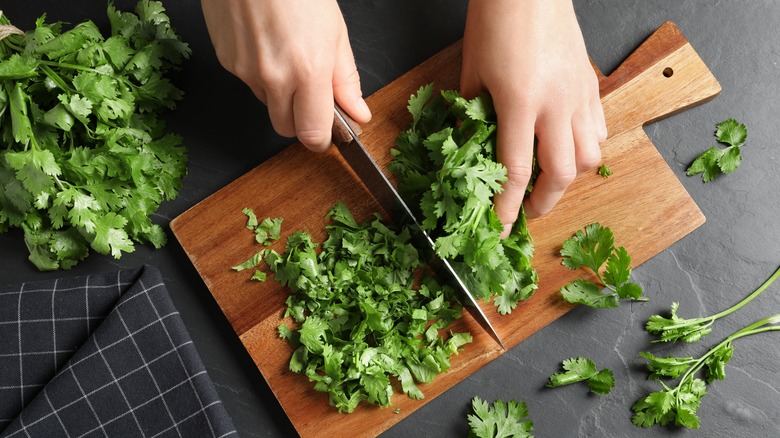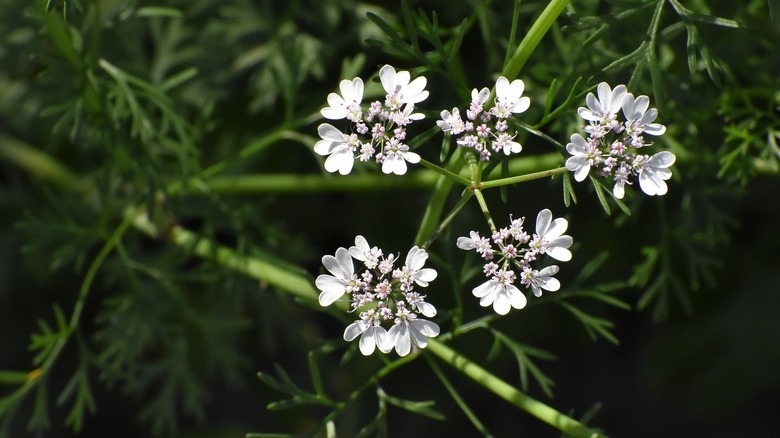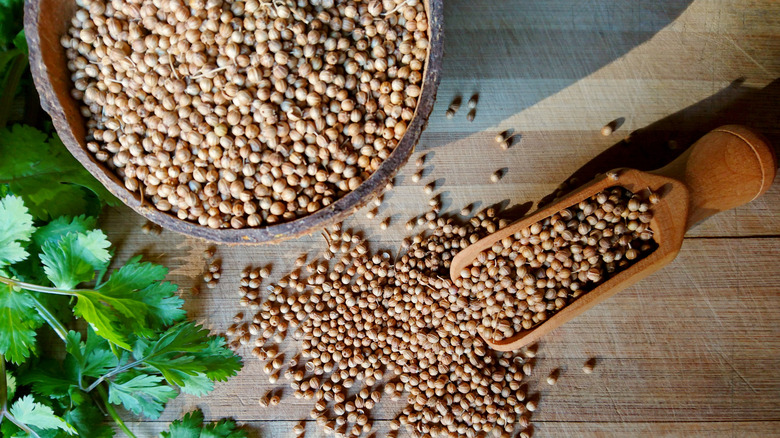The Real Reason Your Home-Grown Cilantro Tastes So Bitter
Cilantro is a flavorful herb to grow indoors or in your garden. But if you've noticed a bitter taste from the leaves of your plant, it has likely started to bolt. This means that your plant is beginning to flower and form seeds, as it's nearing the end of its life. There are several factors that contribute to bolting, such as sunlight, temperature, and watering. When temperatures begin to rise in the heart of summer, your cilantro plant could take this as a sign to begin making seeds. Too much sunlight and longer days may also increase the temperature and cause bolting.
While you may be able to slow down the plant's life cycle and keep it from flowering as quickly, if it has already begun to bolt, you'll have to wait for the next growing season for more cilantro. While the leaves may be inedible, try collecting the seeds for coriander or eating the flowers.
How to keep your cilantro from bolting quickly
One simple way to give your cilantro more time before it begins flowering is to plant it in an area that is shady in the afternoons. Whether it's potted or planted in a garden, a little shade will help to keep it cool and stave off bolting. If your cilantro is in a sunny garden, you could try growing taller plants near it to provide shade, while potted plants could be moved if the sunlight is too intense. Cilantro may also begin to bolt if the soil becomes too dry, so regular watering is important, especially when the weather is warmer.
Once your plant is 4 to 6 inches tall, consistently harvesting and pruning the leaves can help your herbs produce for longer before flowering. When flower stalks begin to grow, removing them quickly might give you a bit more time before your delicious cilantro turns bitter. You can also try growing several cilantro plants a few weeks apart. This will allow you to continue enjoying your fresh herbs even after one plant starts to bolt.
What to do once your cilantro is bitter
No matter what measures you take or how healthy your plant is, cilantro will bolt eventually, but that doesn't mean it's useless. While you may not be able to eat the leaves, the seeds and flowers are still beneficial. Once the flowers have begun to dissipate, you can harvest the seeds to stock up on coriander — or save them for the next growing season.
While blooming, the flowers can be used in your home or garden. Cilantro flowers are beautiful and can be put in a vase for decoration, but they're also great for cooking. The blossoms have a similar but weaker taste to the leaves of the plant and work well in dishes with lamb, chicken, or white fish. If you don't want to use cilantro flowers in your kitchen, they're just as helpful in the garden. Bees and other pollinators — as well as insects beneficial for pest control — love these blooming plants, which will attract them to your garden and help grow your vegetables.


